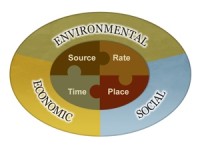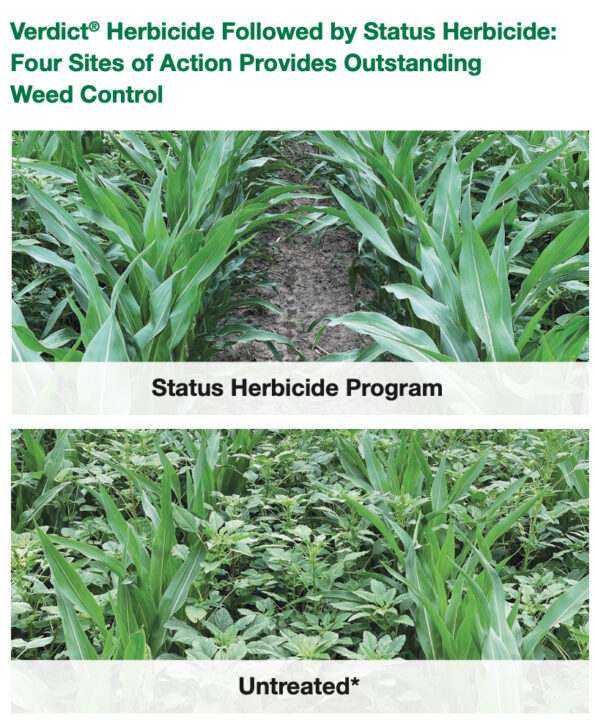Sustainability In Agriculture: The Right Place & Right Time

There’s something to be said about being at the right place and the right time. Now fertilizer retailers can add right rate and right source to that old adage. The 4Rs refers to the right place, time, rate and source. And Nick Sommers, a crop consultant with Crop Production Services (CPS) in Delphi, IN, says the advantage to the 4R Nutrient Stewardship program is that it provides an outline for retailers to use as a self review to see if there are any areas “up for improvement.”
The 4R philosophy revolves around the premise that four aspects of fertilizer management are interconnected and none of the four can be right when any one of them is wrong. Soil conditions, cropping systems, management techniques and climate all play into the scientific principles of 4R:
“It is nice to have the chance to be a part of a start up program that is being proactive in telling the story of American agriculture,” says Sommers. “I think 4R gives us a checklist to see what we can do to grow those aspects of our business that are promoting nutrient stewardship, thanks to the direction of the Institute.”
The Institute Sommers is referring to is The Fertilizer Institute (TFI), the industry voice that represents the public policy, communication and statistical needs of producers, importers, wholesalers and retailers. TFI is working collaboratively with the Canadian Fertilizer Institute, the International Fertilizer Industry Association and the International Plant Nutrition Institute in making the awareness and adoption of 4R a top priority.
“I know TFI and the 4R program is filling a void that we have had — the advocacy portion,” explains Sommers. “I think that’s probably the biggest advantage to this program. It’s not so much the technology that’s offered, but that it’s bringing it all together as one so we can present it to our consumers and the public in the fashion that says: ‘Hey look at what we can do. We are environmental stewards here, stewards of the land and we’re members of your community.’”
The Retailers’ Role
Kathy Mathers, TFI’s vice president of public affairs, says she’s thrilled to hear that retailers are helping growers meet not only their economic and social goals, but that they are doing it in a way to address environmental issues that may be specific within their region. One of the ways TFI is recognizing the adoption of the program is with its 4R Advocate Award Program.
Launched last fall, this grower recognition program rewards agricultural retailers and producers who are leading the way in implementing the 4R system. Sommers nominated one of its CPS’ grower-customers, Todd Welch. Welch manages a 2,300-acre corn, wheat and soybean farm and a 25,000 hog operation.
The award program is just one component of TFI’s larger rollout of the 4R system. The organization is educating members and growers about the 4Rs at agricultural trade shows, member company visits and other 4R speaking engagements.
Retailers can also look to the Website called www.nutrientstewardship.com, which serves to introduce the 4R concept to help educate their customers. A brochure titled “Implementing 4R Nutrient Stewardship on the Farm Right Now” is available as a PDF at the Website or hard copies can be shipped by contacting the TFI office in Washington, DC.
“One of our primary goals in setting up the 4R program was to offer a support system for retailers and their customers that would assist them in increasing their production and profitability,” says Mathers, “all while keeping a close watch on that environmental component.”
Protecting the environment is key in the 4R system and Mathers says the fertilizer industry is taking a proactive stance in its use of nutrients. Before the 4R Nutrient Stewardship program can be implemented, it requires the use of best management practices (BMPs). BMPs optimize fertilizer use, says Mathers. She explains that the challenge for many ag retailers is to match nutrient supply with crop requirements and to minimize nutrient losses from fields. BMPs chosen for a given farm are dependent on local soil and climatic conditions, crop, management conditions and other site specific factors.
“Pressure to limit the use of fertilizers is increasing,” she explains. “Legislative, regulatory and non-government organization activities, including legal action pertaining to nutrients in the environment, are taking place on national, regional, state and local levels,” Mathers says, citing that one such example includes federal government and environmental groups asking for additional regulations and pollution reduction strategies. These include reductions, and potentially, bans on nutrient applications.
Playing A Bigger Role
The stress of population growth is another reason why ag retailers should promote the 4P program. Case in point: The global population is on track to increase by more than two billion people in the next 40 years. With that comes the indication that agricultural production needs to double by 2050.
Industry experts agree that increased production of food, fiber and fuel will only be achieved by intensified production and not through expansion of an arable land base. Genetic and biotech seed industries have predicted yield increases of 3% to 4% per year. However, to optimize the yields of advanced seeds, fertilizer inputs must be optimized to provide the greatest potential for success.
“What makes the 4R system different from other programs we have launched is that it is designed specifically for retailers,” Mathers explains. “Retailers greatly influence growers, and if we can provide them with the necessary tools, together we will have a unified message.”
“We all want to be advocates for agriculture,” emphasizes CPS’ Sommers. “And the 4R system helps us work towards that effort.”





